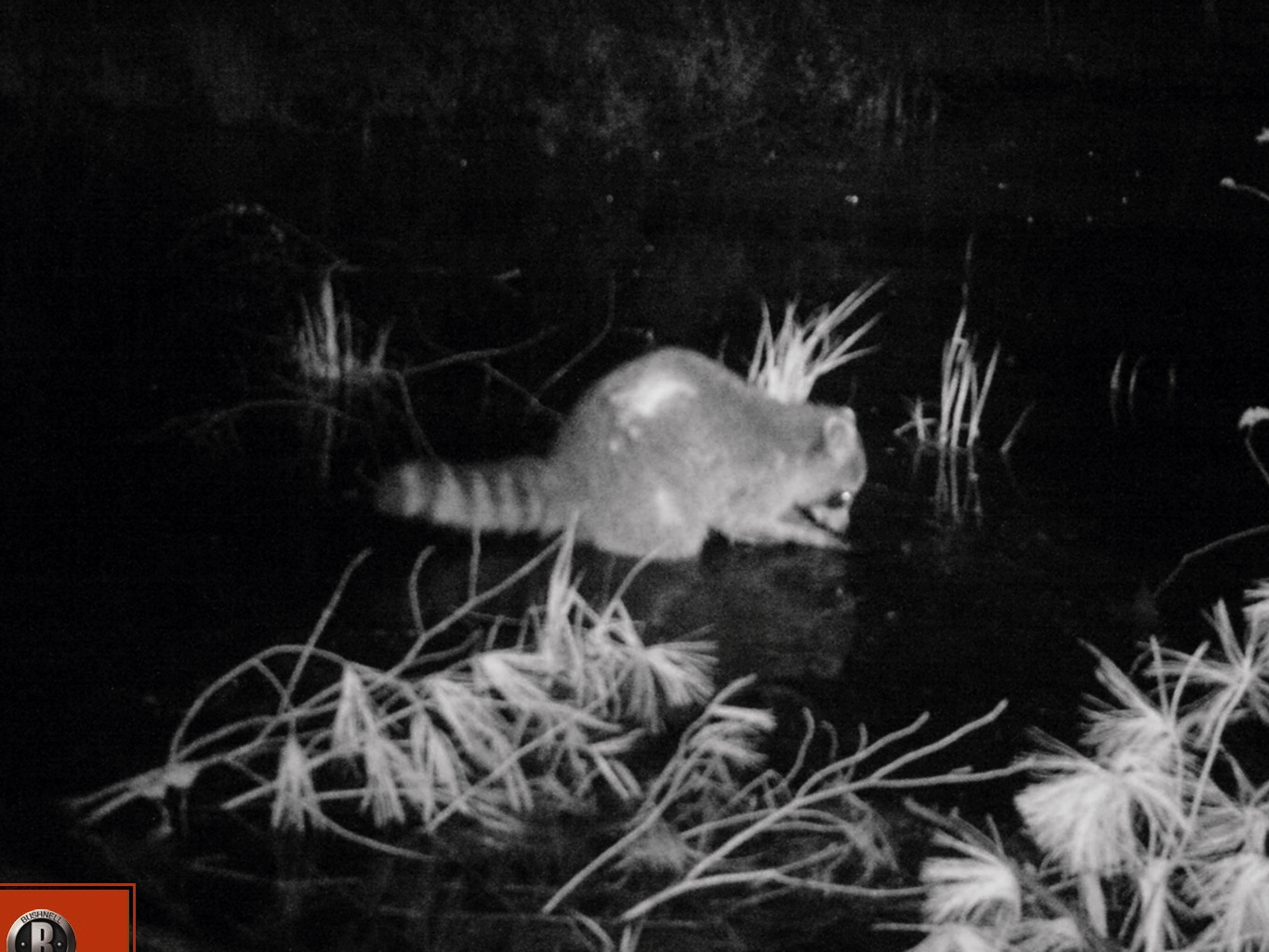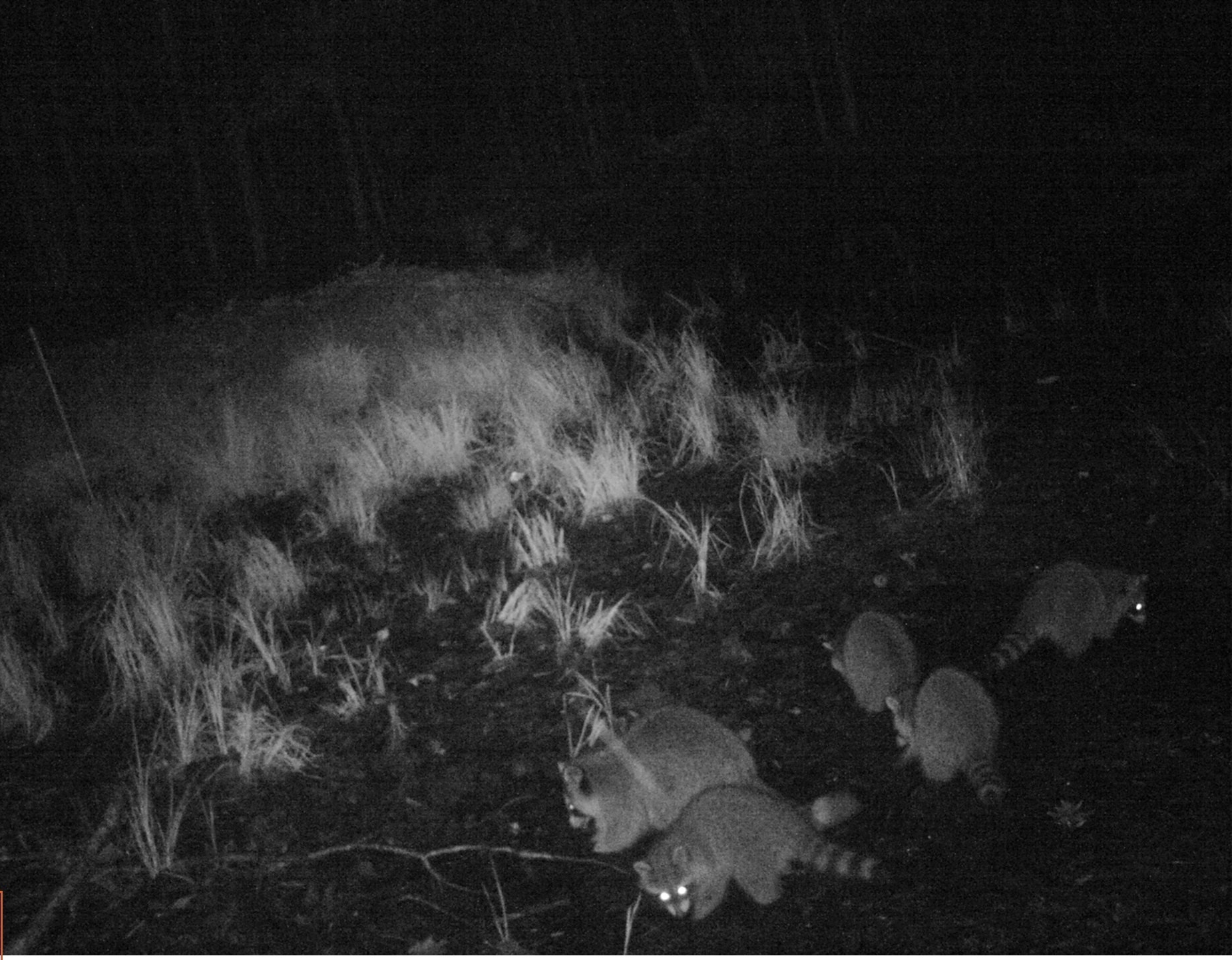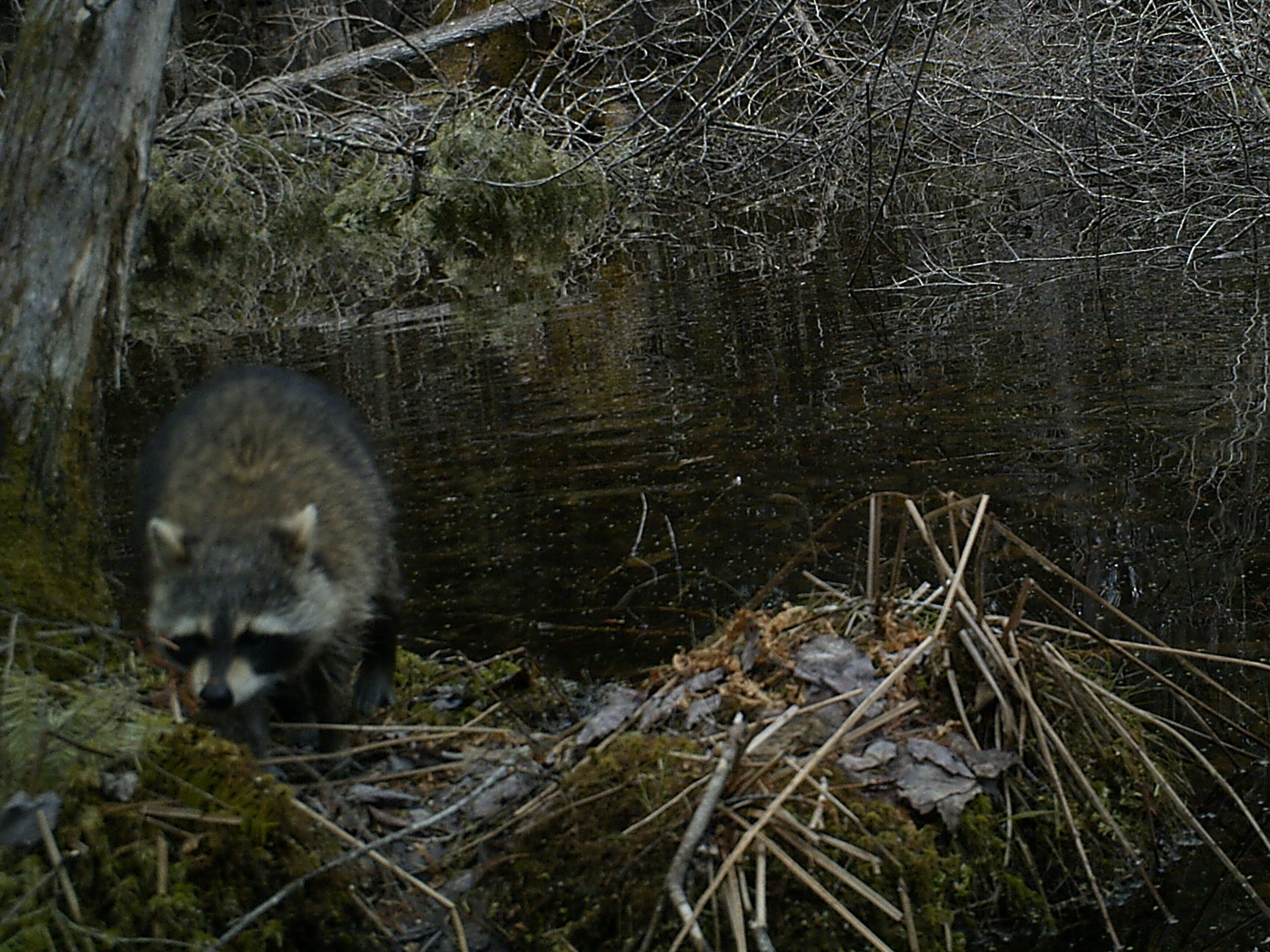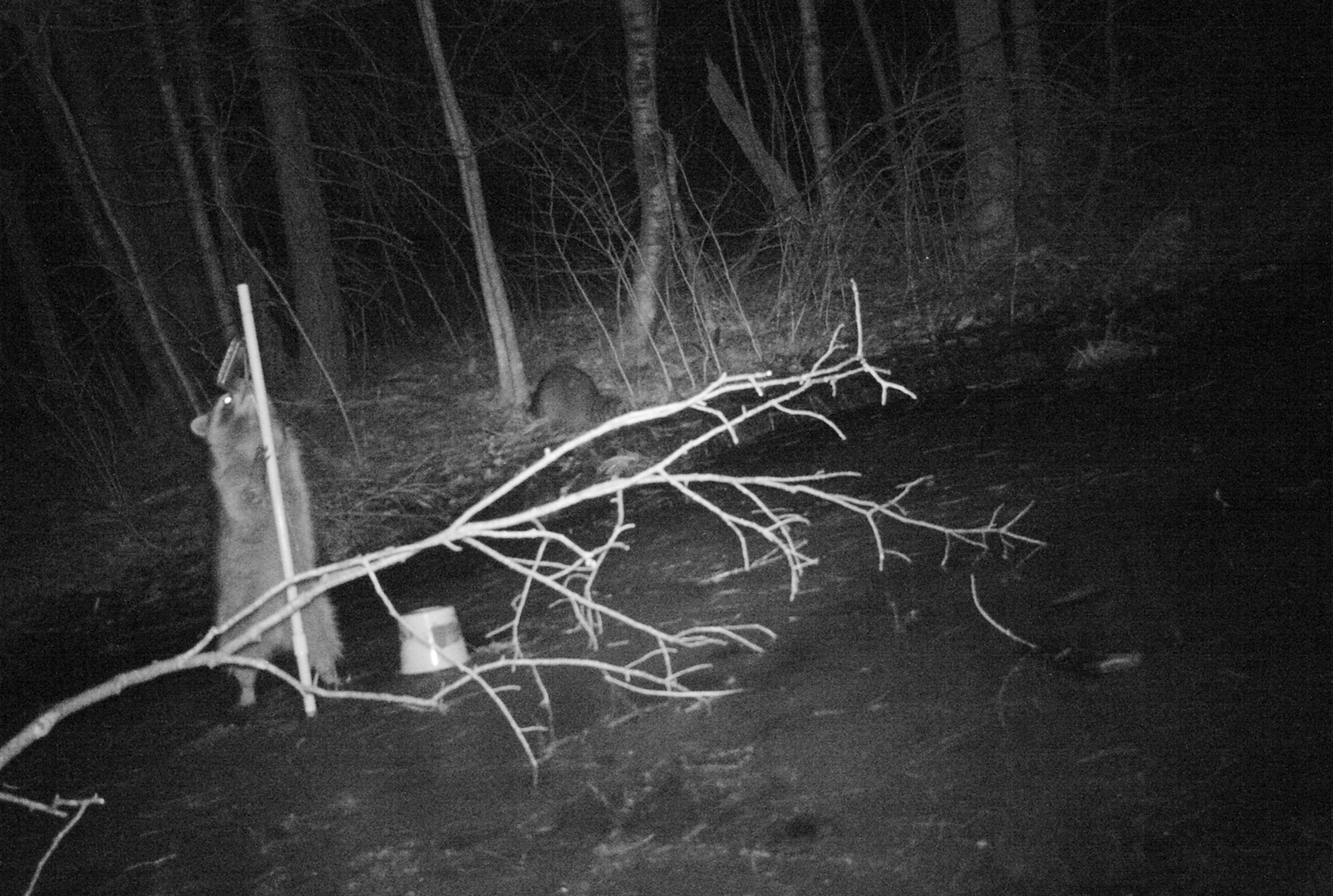By Diane Dunham, Undergraduate Research Assistant, University of Maine and Carly Eakin, Graduate Researcher, University of Maine
Common Raccoon
Nearly everyone is familiar with the masked face of the raccoon. They are a common sight during the summer here in Maine. Because they will eat almost anything, they are highly adaptable. Raccoons occur in most parts of the United States, and can be found in many habitats: in urban areas (where they are notorious for raiding trash cans), in the forest, and in wetlands.
When we put up motion-activated trail cameras at several vernal pools along gradient of human disturbance, we thought we would see some raccoons. Little did we know these vernal pool bandits would be such frequent visitors! Most of us are familiar of the importance of vernal pools to amphibian species such as wood frogs and salamanders, but these pools are often used by other species as well. Although raccoons are known to be urban-adapted, it appears that they readily take advantage of the water and food available at vernal pools.
Even though we cannot see exactly what the raccoons in the photos were eating, we do know that, in addition to human leftovers in trash cans, the omnivorous raccoon enjoys a wide variety of dishes. They make good use of the excellent grasping ability and extreme sensitivity of their long fingers to secure under-water treats, such as insects, crayfish, frogs, and fish. They are also known to enjoy dishes of nuts, fruits, and berries.
Raccoons are also adaptable in their choice of housing, certainly finding ample housing opportunities near the vernal pools. They may den in a hole in a tree, in a fallen hollow tree, in a cave or crevice in a rock, or, if they are lucky (and you are not), perhaps in your attic or shed.
We did not ask the raccoons in this picture (below) if they were related, but they are probably brothers and sisters. Females give birth to up to seven young in these dens in the spring after a gestation period of about two months. In the raccoon world, the womenfolk raise the kids alone. At around three months old, the kids begin following Mom to learn important things, like how to make dinner and store up that extra body fat that will be needed for winter. The young will stay with Mom for a whole year before leaving the proverbial nest. Though raccoons do not hibernate, they will sleep for extended periods during cold snaps – finally Mom gets a rest!
Raccoons are also adaptable in their choice of housing, certainly finding ample housing opportunities near the vernal pools. They may den in a hole in a tree, in a fallen hollow tree, in a cave or crevice in a rock, or, if they are lucky (and you are not), perhaps in your attic or shed.
We did not ask the raccoons in this picture (right) if they were related, but they are probably brothers and sisters. Females give birth to up to seven young in these dens in the spring after a gestation period of about two months. In the raccoon world, the womenfolk raise the kids alone. At around three months old, the kids begin following Mom to learn important things, like how to make dinner and store up that extra body fat that will be needed for winter. The young will stay with Mom for a whole year before leaving the proverbial nest. Though raccoons do not hibernate, they will sleep for extended periods during cold snaps – finally Mom gets a rest!
Raccoons in the wild live an average of 2–3 years, during which time they can reach sizes of up to 3 feet long and potential weights of 40 lbs. or more. Despite their large size, they have some predators. Coyotes and bobcats – two species that we have also captured photos of near the vernal pools – will eat adults. Young raccoons may become food for eagles and owls.
Though curious and intelligent, there are many reasons to keep your distance from raccoons. Raccoons can be very aggressive, especially a mother that feels she is protecting her young. They also carry diseases, such as canine distemper, rabies, and parasitic roundworms, so if you do happen to have a family residing near (or in) your home, extra care should be taken to avoid exposure to any of these potential issues.





